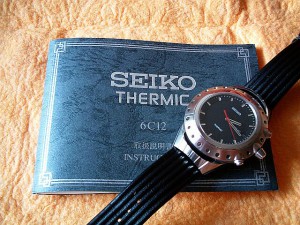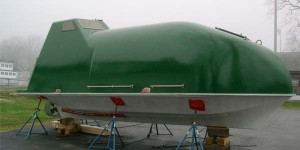What is a thermoelectric device?
A thermoelectric device creates voltage when there is a different temperature on each side. The thermoelectric effect is the direct conversion of temperature differences to electric power and vice-versa. When temperature differences are converted directly into electricity, this is called the Seebeck Effect.
A thermoelectric generator
One common thermoelectric device is a thermoelectric generator.

In this setup, there is a heat source on one side, and the other side is cool (see figure). If a heat source is provided, it causes the movement of power current through the circuit. Hot carriers diffuse the hot end to the cool end and vice versa. Adding the heat source and allowing for this movement to begin causes the generation of electricity.
Example of a Thermoelectric Device – a Thermocouple
A thermocouple is a couple of metals that are joined together, or coupled, for measuring heat. Thermocouples are widely used in science and industry because they’re typically very accurate and can operate over a large range of temperatures from extreme hot to extreme cold. Metals used in thermocouples include iron, nickel, copper, chromium, aluminum, platinum, rhodium and their alloys.
Different Applications of Thermoelectric Devices
Thermoelectric devices are used in larger machines as part of power generation. A great example of this is a diesel engine. The Thermoelectric Project in Maine aims to “recover waste heat from large marine Diesel engines using Thermoelectric technology.” Initial research was done using Maine Maritime’s vessel Friendship during an initial feasibility study. Their “green machine” works to recover energy.
Another application is Seiko’s Thermic watch, which uses body heat to power its thermoelectric device.

Only 500 of these were made, and this was back in 1998. They cost over $2,500 when they were available.
Conclusion
Thermoelectric devices are a way of converting temperature to energy. Thermoelectric devices are commonly used in diesel engines, but have a lot of other uses. The Thermoelectric Project in Maine and the Seiko watch are some examples of creative uses of thermoelectric power.
